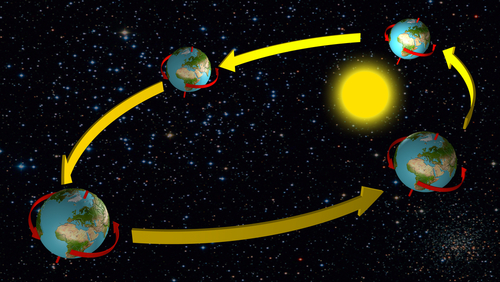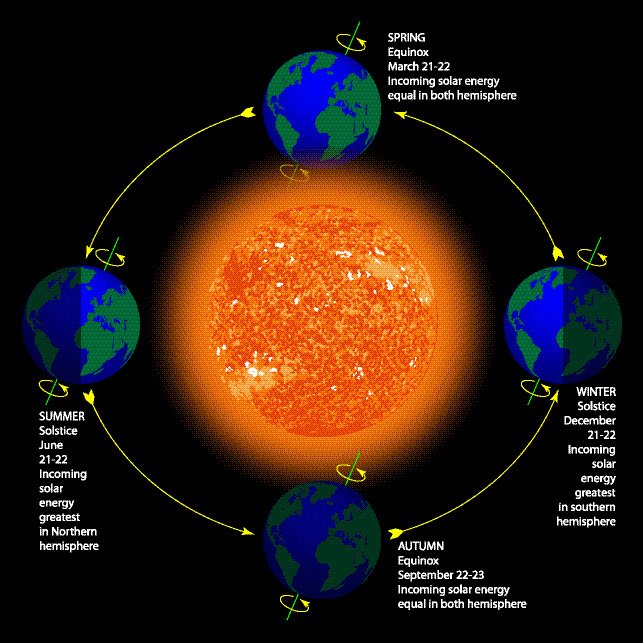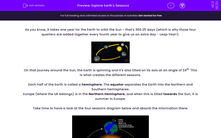As you know, it takes one year for the Earth to orbit the Sun - that's 365.25 days (which is why those four quarters are added together every fourth year to give us an extra day - Leap Year!).

On that journey around the Sun, the Earth is spinning and it's also tilted on its axis at an angle of 24o. This is what creates the different seasons.
Each half of the Earth is called a hemisphere. The equator separates the Earth into the Northern and Southern hemispheres.
Europe (where the UK belongs) is in the Northern Hemisphere, and when this is tilted towards the Sun, it is summer in Europe.
Take time to have a look at the four seasons diagram below and absorb the information there:

When the Northern Hemisphere is tilted away from the Sun, it's winter in Europe. The Sun is not very high in the sky at midday and days are much shorter than nights.
The Southern Hemisphere is slightly closer to the Sun during its summer, and that's why summers in the Southern Hemisphere are often hotter than ones in the Northern Hemisphere.

As you can see, whenever one hemisphere tilts towards the Sun, the other hemisphere tilts away.
This means that the Northern Hemisphere always has the opposite season to the Southern Hemisphere. (For example, when it is summer in the North, it is winter in the South).
In summer, the Sun feels hotter because its rays are much more concentrated than they are in the winter, as the Sun is higher in the sky.

This is what makes the difference - each area of the land under the summer sun receives a more concentrated dose of sunshine. Summer days are longer, so the Sun has more time to warm the surface of the Earth.
OK, so that was quite a lot of information to absorb. You might want to go through it again before you tackle the questions.
Remember, you can come back to look at this page, any time, simply by hitting the red button on the right-hand side of each page.







